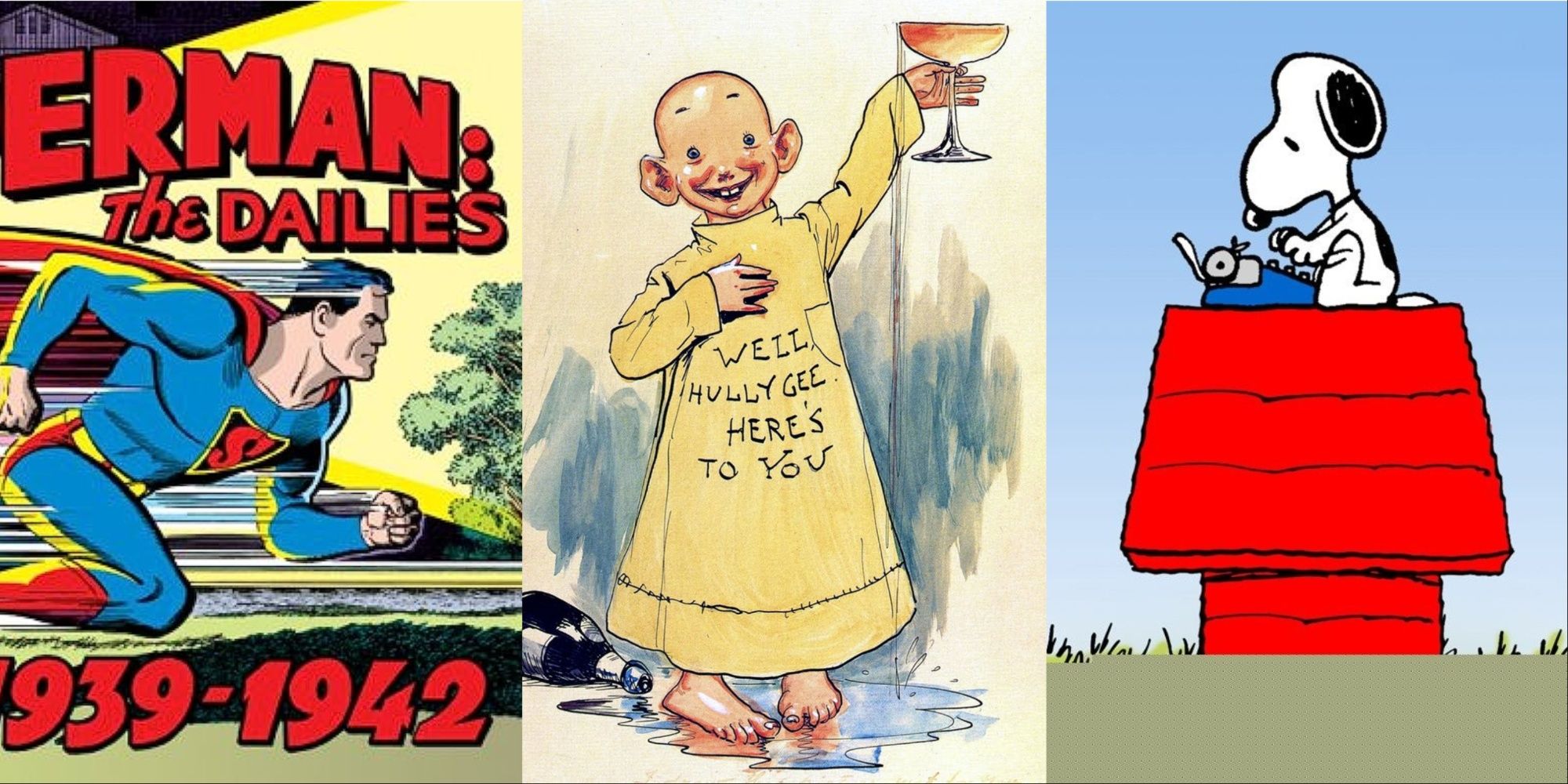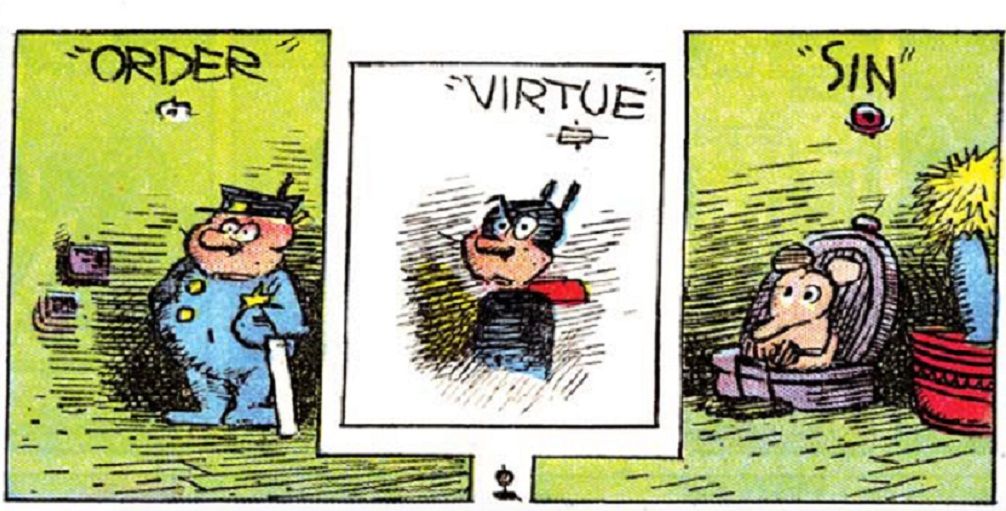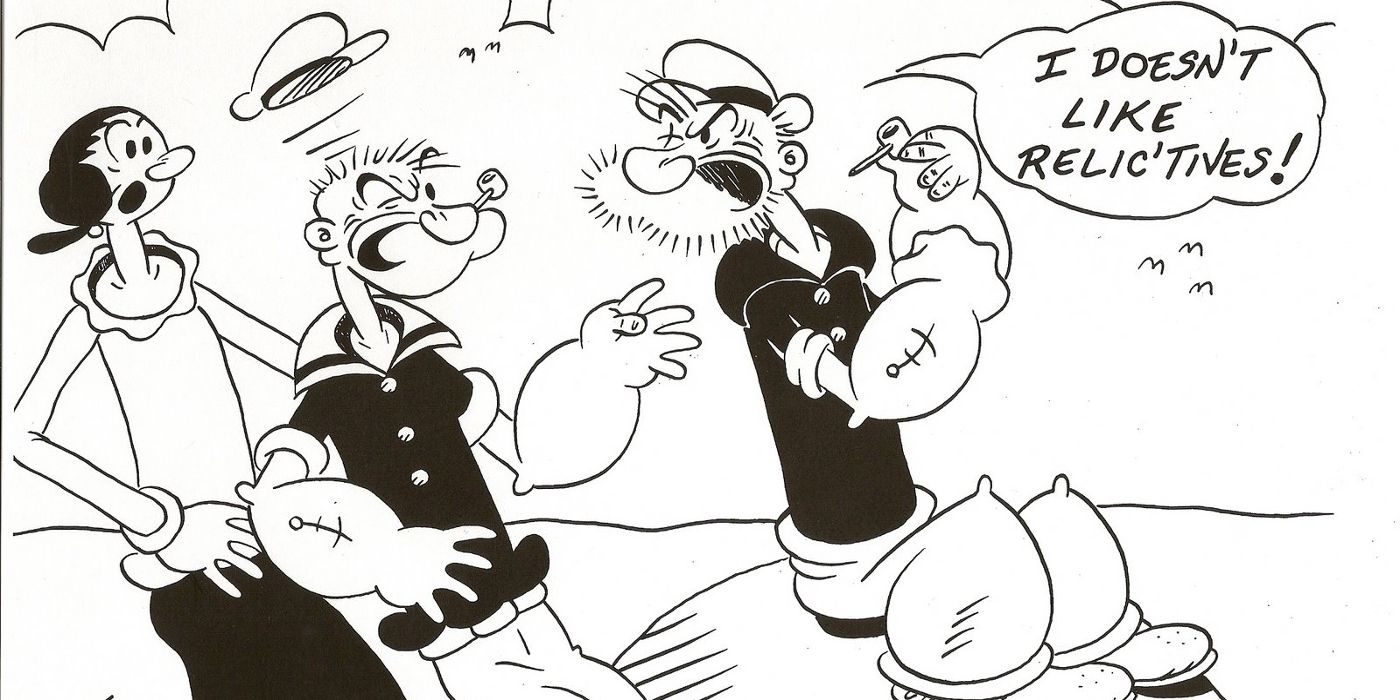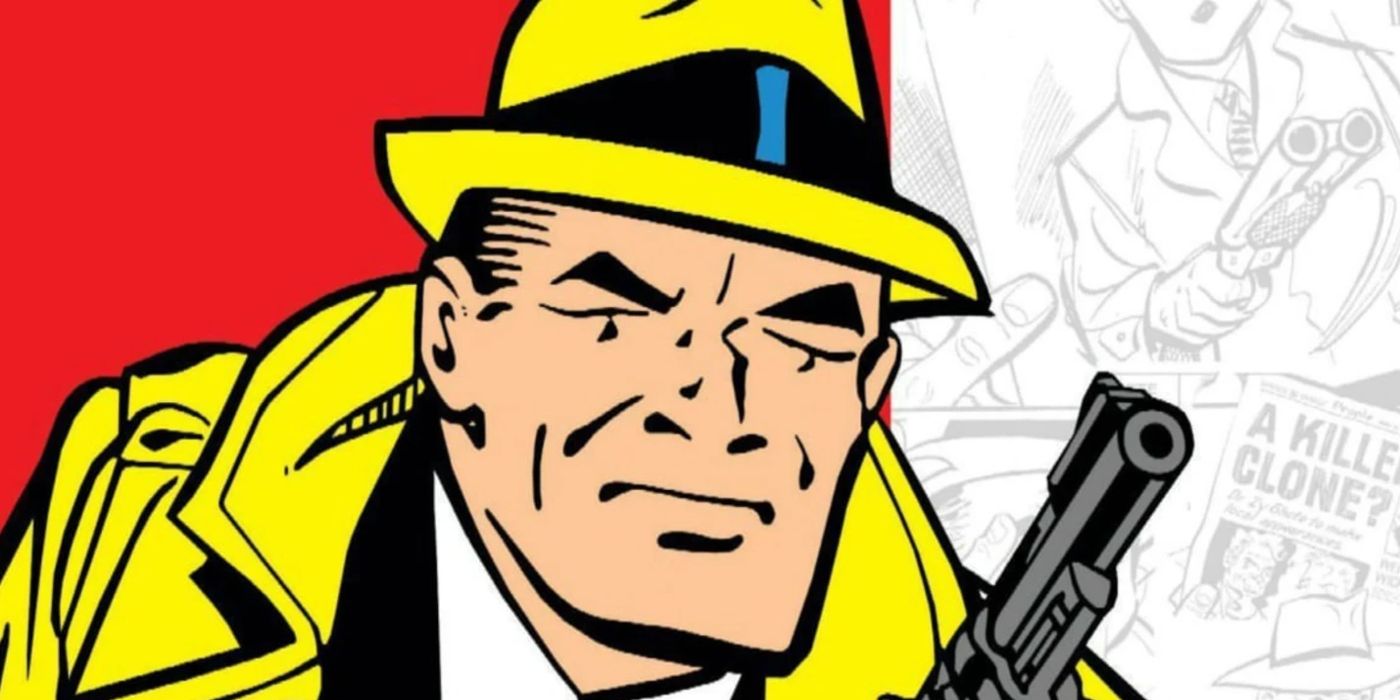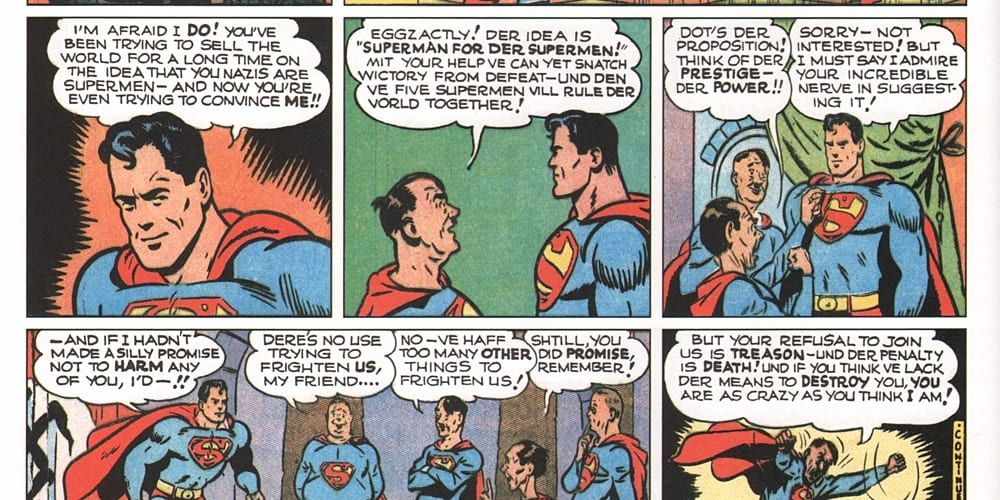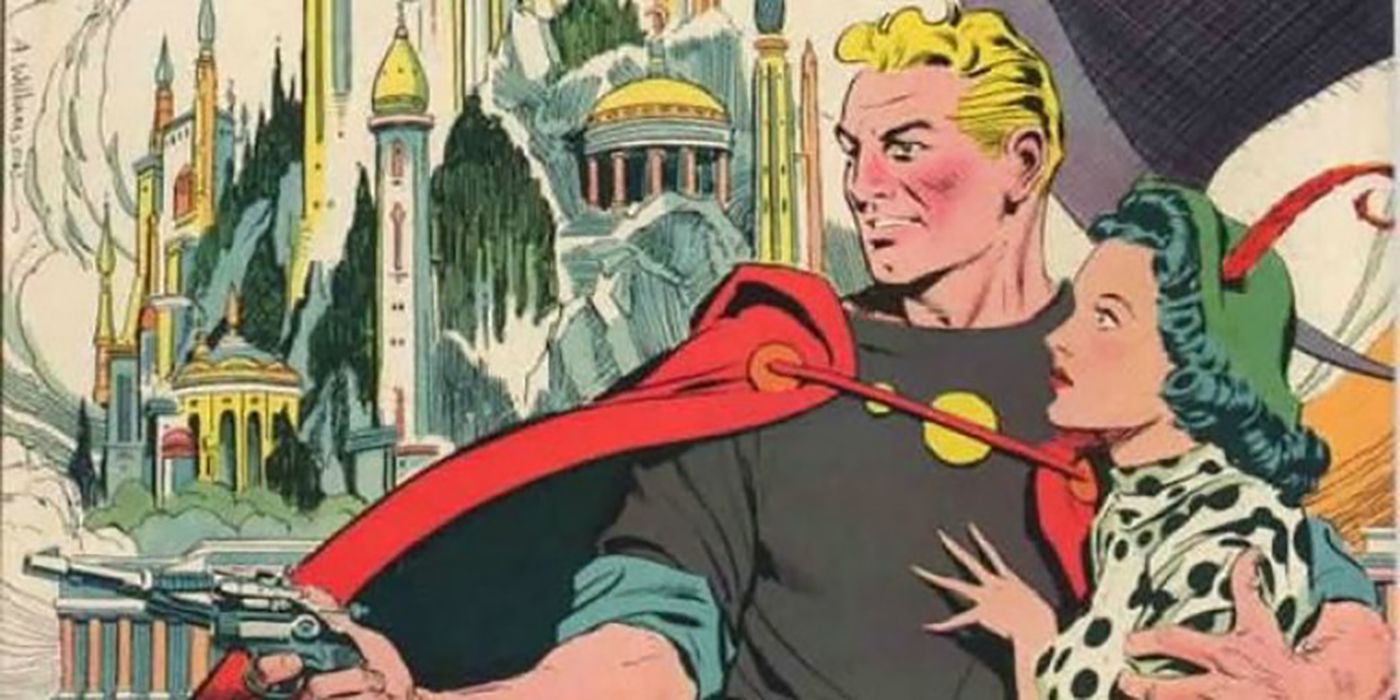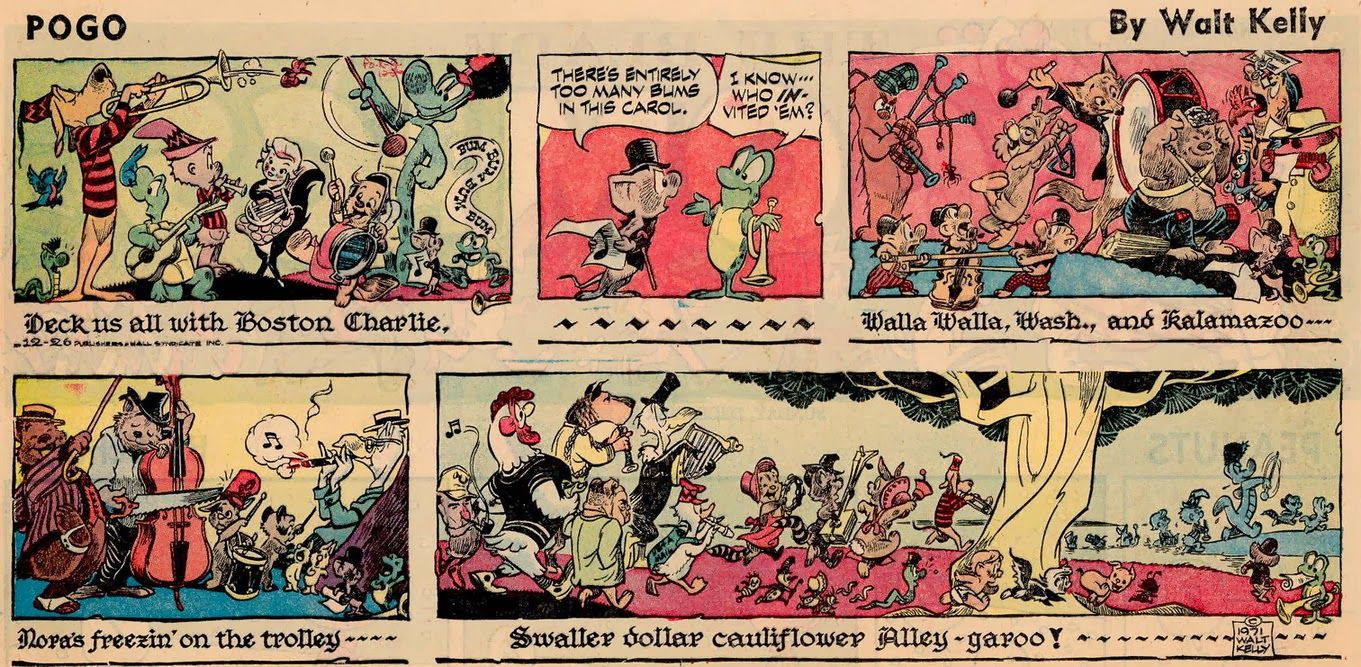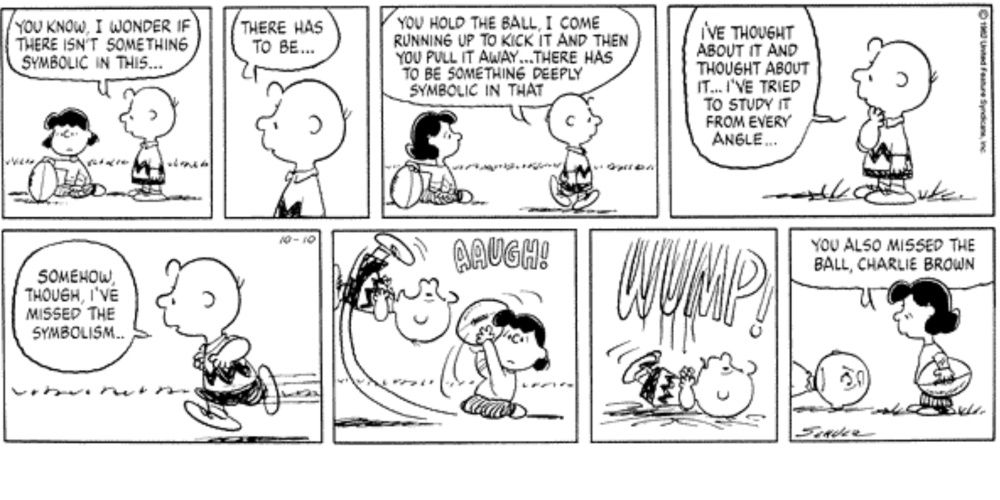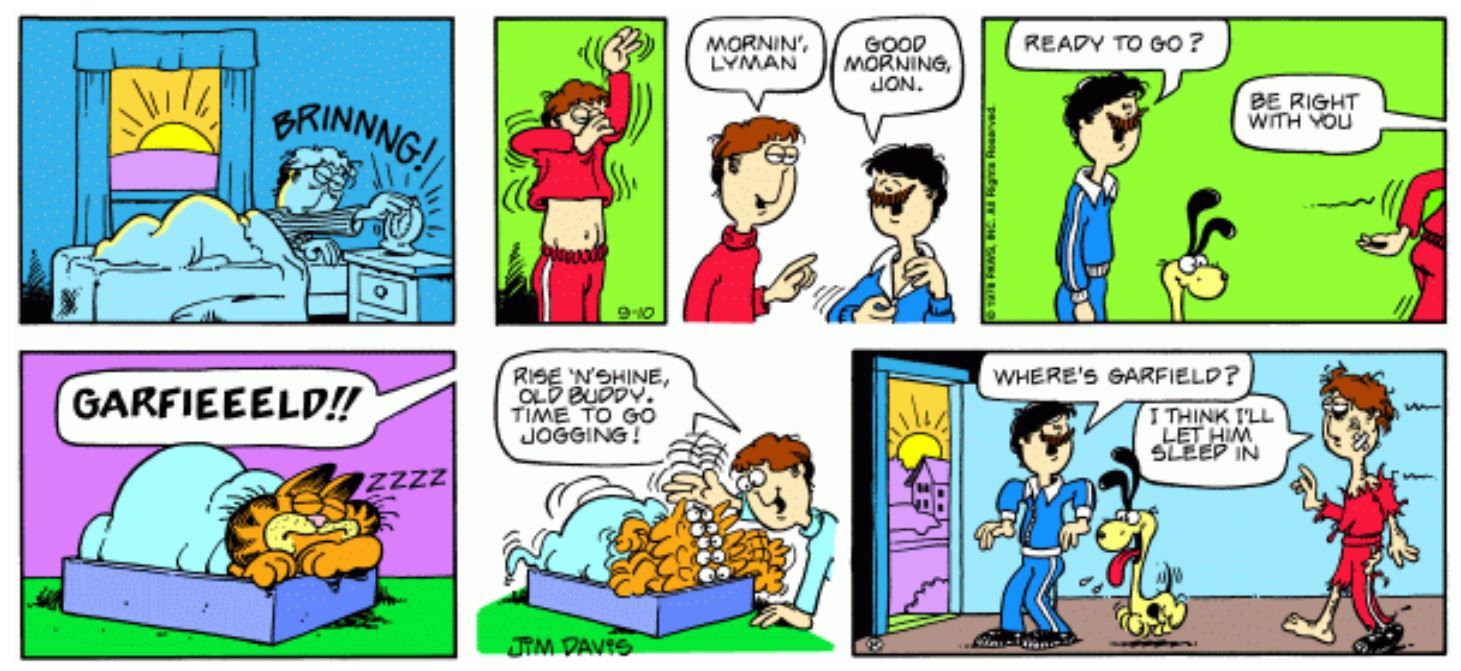It's easy for even well-educated fans to underestimate comic strips' influence over the comics medium. Newspaper strips were popular for decades before Action Comics #1 was published, though, and many of the signs and signifiers that populate comics were developed in King Features and the New York Herald Tribune's syndicates' metaphorical laboratories. These seem like humble beginnings but they sparked multibillion-dollar multimedia empires like the MCU.
By quietly changing the way people think about comics and art, some of the most important comic strips opened up incredible artistic possibilities. While strips like Peanuts are justly famous for the way they changed comics' game, early strips like Krazy Kat and even contemporary behemoths like Garfield deserve credit for their influence, good and bad.
10 Krazy Kat
George Herriman created over 20 comic strips in his career but Krazy Kat was his lone success story. Even when he was drawing caricatures for the Los Angeles Examiner's sports page, he pushed up against the comics page's limitations. When William Randolph Hearst guaranteed Krazy Kat's success with a lifetime contract, the brilliant artist knew he could make a difference.
Krazy Kat's formula was simple but Herriman's execution of a slapstick love triangle between Krazy, Ignatz Mouse, and Officer Pup was sublime. Krazy Kat's colorful, surrealistic vistas dominated the Sunday page and, for the first time, comics openly influenced everyone from President Woodrow Wilson to writers like Gilbert Seldes and e.e. cummings. Adapted in ballets and ballads, Krazy Kat demonstrated the sheer power a simple comic could have.
9 Thimble Theatre
E.C. Segar's Thimble Theatre was a blend of humor strips like Bringing Up Father and adventure stories like Terry and the Pirates and Flash Gordon. Segar perfected the formula when he added Popeye the Sailor to his already rich cast of oddballs, creating one of comics' most incredible antiheroes in the process. While Popeye is almost too noble to care about in his animated forms, Segar's Popeye was problematic and lovable in turns. He was nearly pathologically generous but he also drank and gambled to excess, and could be a burden to his friends.
For all of his complexity, though, Popeye really changed comics through his muscles. Introduced in 1929, almost a decade before Superman, he was comics' first popular superhuman, almost as strong and unstoppable as the Golden Age's Man of Steel. Thimble Theatre's Popeye didn't need spinach to defeat his foes, either, and instead of weaknesses like Kryptonite, Segar relied on character flaws and redoubtable foes like the Sea Hag to challenge the erstwhile ubermensch.
8 Dick Tracy
Chester Gould's police detective Dick Tracy made it to newspapers in 1931, and he brought a huge host of villains with him. While the famously square-jawed hero was simple and incorruptible, his grotesque rogues' gallery was unique to comics at the time. A reflection of Gould's infamous reactionary streak, violent criminals like Flattop, Mumbles, and Pruneface were the personifications of urban violence, with a little xenophobia thrown in around the margins. Chester Gould was a country boy at heart, always shocked by what he saw as Chicago's excess, and his work reflected that.
Chester Gould injected comics with a black-and-white morality that influenced everyone from Superman to Spider-Man to Rorschach. This came with some huge drawbacks, of course, but the power underlying incorruptible good and gross evil is undeniable. Dick Tracy's incredible rogues' gallery also had a huge influence on superhero comics, paving the way for grotesque villains like the Joker and Green Goblin, and teaching heroes like Batman how to collect a memorable catalog of foes.
7 Superman
Superman famously made it to comics in Action Comics #1 but Jerry Siegel and Joe Shuster thought they were creating a newspaper hero when they originally pitched him to National Comics. By 1939, Superman was a nationally syndicated title, introducing major characters like Mister Mxyzptlk to the public and running stories focused entirely on Lois Lane.
Costumed heroes like The Phantom had already laid the groundwork for Superman in comic strips but bringing comics' first superhero to newspaper readers was an important step that helped cement the Man of Steel's role in America's zeitgeist. These Superman comics helped popularize the idea of superheroes and paved the way for adaptations in animation, radio, film, novels, and television.
6 Flash Gordon
It's easy to underestimate Flash Gordon's influence on comics. After all, Buck Rogers came first, and Flash and his crew are remembered in pop culture as the subject of 1980's cheesiest sci-fi film. However, Flash Gordon popularized important science fiction and superhero concepts in ways no other strip had done before. Buck Rogers introduced the formula to newspapers but Flash Gordon perfected it.
Flash Gordon was hugely popular, and it introduced fans to everything from spaceships to energy weapons to hawk-winged humanoid aliens. It wasn't the first sci-fi or adventure strip, and it owed a huge debt to pulp writers like Edgar Rice Burroughs, but it resonated with fans in new ways. Sometimes, that's all that matters.
5 Pogo
Walt Kelly's Pogo was hugely popular and it represented an enormous achievement in comics. Known for its huge cast and lush backgrounds, the strip didn't rely on punchlines but imbued every panel with humor and heart. Set in the Okefenokee Swamp, it seemed like just a cute funny animal comic, but even at the time, its fans recognized it as a subversive artistic masterpiece.
Building on Krazy Kat's foundation, Pogo blended absurdity with political satire and social commentary. Kelly used his comics as a venue for poetry and doggerel and pushed the medium's boundaries with incredible inking and lettering that feels impossible today. He made the comics page a home for laughter and thought, even as he reminded his readers about dark truths with unforgettable quotes like "We have met the enemy, and he is us."
4 Peanuts
While Charles Schulz's Peanuts built on intellectual predecessors like Pogo and Krazy Kat, it also introduced a new minimalist style to the comics page. Obviously, Charlie Brown and his friends were universally appealing from the start, but they also represented a step away from lush, lovingly illustrated comics. Unfortunately, as newspapers reduced the sizes they printed their comics at, this became the norm.
The blame for smaller comics doesn't fall on Peanuts alone, obviously, but the strip's popularity certainly made it easier for newspapers to pivot away from artwork-based strips like Prince Valiant. However, the strip still managed to maintain an important intellectual tradition in comics, and its philosophical children obviously impacted important strips, from Calvin and Hobbes to Mutts.
3 Doonesbury
Gary Trudeau's Doonesbury famously started out as a student strip in the Yale Daily News, focused on campus life in the tumultuous late 1960s. Known for its left-leaning politics, the comic has also developed a complex cast of characters who live and die in real time and has evolved beyond any kind of simplistic political allegory.
Doonesbury let its characters grow in ways that even long-running comics like Spider-Man balk at. While B.D. started out as a conservative bully and straw man, he's fought in several wars and become a sympathetic voice for veterans. Mike Doonesbury himself aged into conservatism and then out of it again, while campus radical Mark Slackmeyer discovered his homosexuality and built a life for himself in radio. Doonesbury makes solid political and rhetorical points but the characters are the comic's heart.
2 Garfield
Debuting in 1976, Jim Davis's Garfield started out strong but declined quickly after it had secured its place in the funny pages. Starting off with a vibrant, eccentric cast that included Jon Arbuckle's friend Lyman, Garfield's love interest Arlene, and Nermal, the World's Cutest Kitten, Garfield's world was originally designed to contrast with Garfield's sullen, sarcastic nature. The strip has since shrunk to Jon, Garfield, and Odie, with occasional appearances from Jon's girlfriend, Liz, and has lost almost all of its setpieces and sense of place in the process.
In the 21st Century, Garfield is more of a product than a creative endeavor. While comics like Peanuts had certainly sold their share of merch, Garfield's relentless journey to t-shirts, coffee mugs, amusement parks, and movie screens has felt like the strip's real mission for decades. While it's still drawn by talented illustrators like Eric Reaves, and Garfield's creator doubtless keeps his hand in, Jim Davis has largely managed his character's brand for many years.
1 Hogan's Alley
Today, The Yellow Kid is largely remembered as "the first" comic strip character. This isn't entirely true but Richard Outcault's silent hero, Mickey Dugan, certainly helped redefine comics when he debuted in 1895. While the Kid's home, Hogan's Alley, was clearly a prototype for modern comics, barely implementing now-universal symbols of comics like word balloons and panel borders, it was one of the most influential examples of sequential art ever created.
By focusing on urban immigrants, Hogan's Alley made its audience clear. Since many of its readers were functionally illiterate, Outcault focused on visual storytelling in ways his predecessors hadn't imagined. As one of the most merchandised characters of his day, the Yellow Kid was a pioneer in other ways. He appeared on everything from toys and cracker tins to cigarettes and whiskey bottles in his heyday and, because he wasn't trademarked properly, he also heralded an era where battles over intellectual property would become surprisingly normal. Like the comics medium, the Kid's legacy is a mixed bag, but there's no denying his influence.

